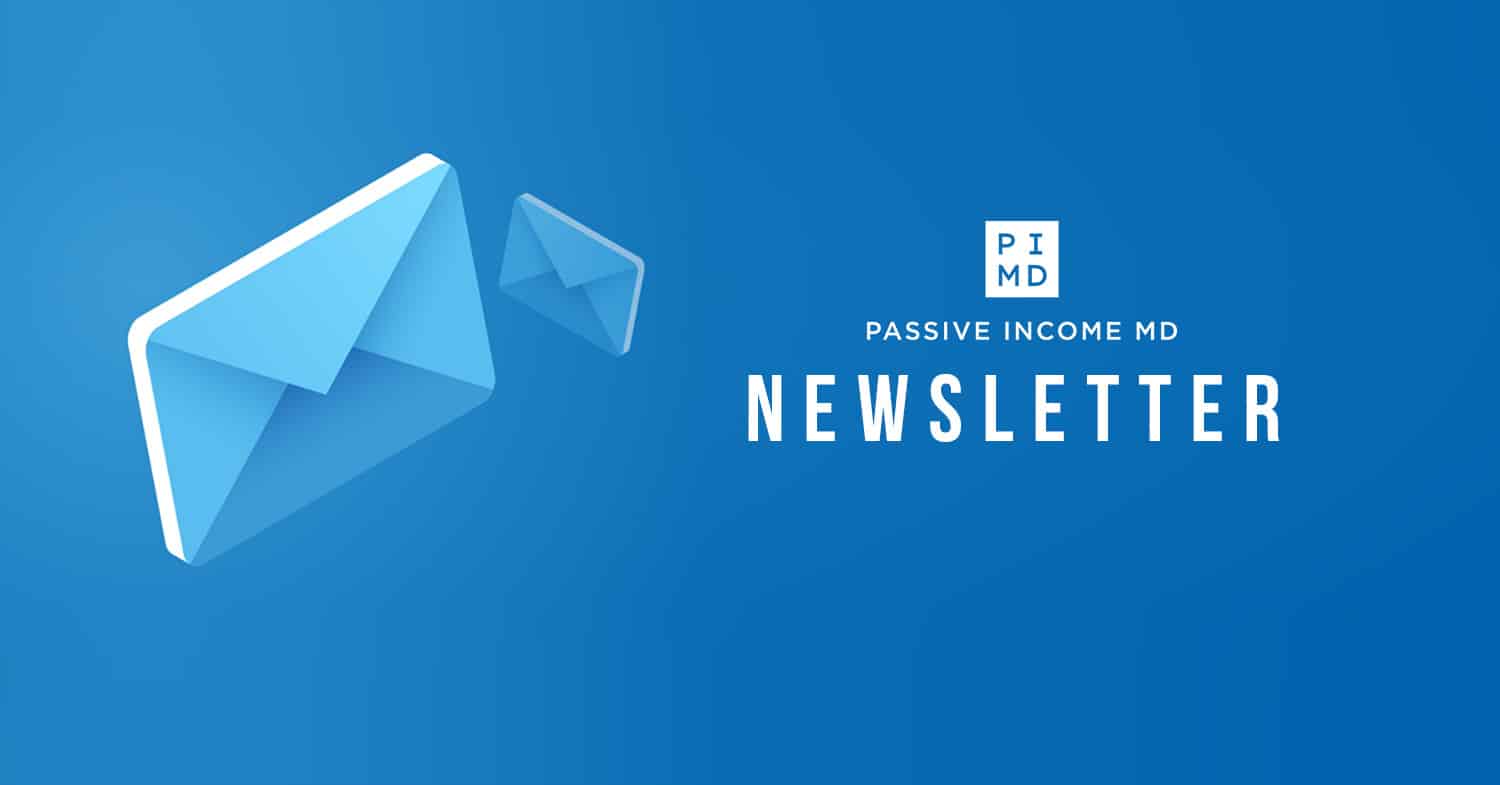
My 5 Current and 3 Future Passive Income Streams
This post may contain links from our sponsors. We provide you with accurate, reliable information. Learn more about how we make money and select our advertising partners.
Today’s Classic is republished from Physician on Fire. You can see the original here.
Enjoy!
Recently, a reader reached out to share how his taxes were affected by his various passive income streams. It turns out, to no surprise, that the taxes on those income sources are much lower than those levied on his earned income.
Although my passive income streams have grown steadily over the years, I haven’t put too much thought into their role in either my taxes or my standard of living until recently.
What changed? My active earned income dropped dramatically.
Now that I don’t work a W-2 job, my cash flow situation and taxation look a lot different than they did before, and passive income sources play a more prominent role in my life.
I realized I currently have four broad categories of passive income, and I’ll be adding another four significant income sources in the future. Let’s review them, shall we?
My 5 Current and 3 Future Passive Income Streams
What is Passive Income?
One of the reasons I haven’t paid that much attention to my passive income streams is that the term is overused and sometimes abused. I’ve grown tired of reading about “passive” income sources that seem to have a very active component.
I appreciate it when Dr. Peter Kim of Passive Income MD acknowledges this in the aptly titled article “What is Passive Income?“. He defines it as “income that is not proportional to the time you physically put into acquiring it.”
In other words, there may be an active component, but your returns are not fully dependent on how much work you do. Typically, the work is done upfront, and the rewards are reaped later, often with minimal ongoing efforts.
This is true of all of my fairly passive income sources.
#1 Interest
Banks are not paying much in interest, but there are several online banks with a solid reputation paying 1% interest or more.
I am not a huge fan of sitting on cash, but for various reasons, I’ve been doing a lot of it lately.
I keep an emergency fund. When you don’t have a steady paycheck, it’s good to have readily available money. The pandemic has highlighted the importance of having that fallback to rely on.
I pay quarterly taxes. This necessitates the stockpiling of cash to ensure that taxes can be paid on time and in full, avoiding any potential penalties.
I like dealing in cash rather than taking on debt. Each of our last two home purchases were made in cash, and our cabin was purchased with cash, too. We’ve made a couple of cash offers on homes in recent weeks, and it’s comforting to know I won’t have to scramble to come up with the funds if and when a bid of ours is accepted.I don’t hold a million in cash like this guy (and I keep very little physical cash around at all), but I hold enough to earn at least hundreds of dollars, and perhaps a few thousand dollars a year in interest.
#2 Dividends
I’ve never been a big fan of dividends. When I wrote about the only individual stock I held, I highlighteded the fact that it pays no dividend and why that’s a good thing. I’ve demonstrated how selling shares of a company is better than receiving a dividend from it.
Nevertheless, dividends are more problematic for those in the highest tax brackets, and they have become a significant source of cash flow for me and my family. By virtue of owning index funds in a Vanguard brokerage account, I receive enough dividends to support at least a third of our annual spending.
If I were to add in the dividends received in tax-advantaged accounts on top of those, an even higher percentage of our typical spending would be covered.
I don’t love counting dividends as true income, since receiving dividends doesn’t increase your net worth at all — it’s effectively just being forced to move money from investments to cash — but dividends are a source of significant cash flow, and I don’t know anyone that doesn’t consider them to be a source of passive income.
#3 Real Estate Investments
If I were to count each investment or even each type of investment as a different source of passive income, I would have way more than four. I’ve chosen to lump them together into the same category, and I’ll briefly review what these are.
Vacant Property
Several years ago, we invested in 7 acres of lakefront property. We considered building on it ourselves, but we decided to let someone else have that opportunity. We sold a parcel in the summer of 2019 and the remainder in 2020.
There was certainly an active component to finding, purchasing, improving, and marketing the property, but the efforts are small in proportion to the nearly six-figure profit on a $168,000 property, fitting Dr. Kim’s definition of passive income.
Equity Crowdfunding Deals
I have invested in five equity crowdfunding deals.
Two are ongoing ground-up builds in the no-income-tax state of Texas, a student housing complex and a townhome development, both via Crowdstreet.
A third investment is a share in a luxury condominium via Republic Real Estate (formerly Compound). This will pay an annual dividend and, like the others, a return of capital plus upside when sold.
Two that have gone full circle were multifamily housing value-add deals via Alpha Investing and EquityMultiple. These two paid dividends from ongoing income, returning my principal and then some, with internal rates of return of . You can read more about these and the returns of others in a detailed look at my many real estate investments.
Real Estate Access Fund
I invested in a fix-and-flip debt fund from DLP via Cityvest. Without the pooled funds from Cityvest, I would not have met the $250,000 minimum to invest directly with DLP. For an added fee, I was able to invest $50,000. This investment pays quarterly dividends, and I can expect a return of capital a few years down the line.
eREITs
All of the above (with the exception of Republic Real Estate) are reserved for accredited investors — those with a high net worth and/or high income. eREITs are available to any investor and the risks are reduced by pooling numerous investments like those above into one fund.
I have invested in funds from DiversyFund, RealtyMogul, and Fundrise. These provide quarterly dividends, and there may be capital appreciation from the projects in the funds, as well.
Farmland
Just like everyone needs a place to live, everyone’s got to eat. I’ve got my two acres of crop-producing farmland acquired via AcreTrader (see my AcreTrader Review).
The farm I’m invested in is rented to a local farmer and I receive dividends from the proceeds. Like many of the other real estate investments, the plan is to eventually sell the property at a higher price than it was acquired, and I expect to turn a profit when the farm is sold.
I have also successfully exited from small debt deals in the past with RealtyShares and Peerstreet.
Altogether, these various income streams currently add up to a high four-figure amount, but many of the eventual liquidity events (i.e. property sales) will result in five-figure profits.
#4 Other Websites
I hesitate to include these as passive income ideas, and I want to clarify right off the bat that I’m not talking about my own site, the one you’re reading now. The profit that comes in from my activities here at Physician on FIRE is definitely actively earned income (and I donate a lot of it).
However, I am invested in two other personal finance websites. Perhaps you’ve heard of them: Passive Income MD and The Physician Philosopher.
When my physician friends Peter Kim and James Turner joined Jim Dahle and I in The White Coat Investor Network, we formed partnerships in both the friendly and corporate sense, and I purchased a small slice of their respective companies.
As a result, I receive quarterly profit-sharing checks from them, and as their businesses grow, the value of my equity stake grows along with them.
It’s not entirely passive, as I do feature them frequently on this website, and, like I said, this website takes work. But I feature lots of other blogs here, too, mainly in The Sunday Best, and those others aren’t providing me with income of any kind.
#5 The 457(b)
Each year that I was eligible during my working career, I maxed out a non-governmental 457(b). I’ve got roughly seven years worth of contributions plus earnings in the account.
There are no age restrictions on withdrawals from the account and there are some risks to leaving it be. After all, as deferred compensation, the money’s not officially mine until I withdraw it.
Although I took quite a hit when the market tanked in early 2020, it eventually bounced back, and I started drawing down the account in 2021 and will continue withdrawing from it for five years or so until it’s fully depleted.
My 3 Future Passive Income Streams
If I were to quit blogging tomorrow, I would have no active income to speak of and the passive income streams I’ve outlined, while growing, would not be enough to fully support our lifestyle.
Does that mean I need this blog income to get by? Not at all.
I’ve outlined my withdrawal strategy in detail here and again as I described the different Epochs of Early Retirement.
I do have at least 3 more passive income streams that I’ll be taking advantage of in both the near and distant future. These are some combination of a return of capital and return on investment.
Does that make them true passive income? I honestly don’t have the answer, which is one reason I don’t love this whole passive income concept. Everyone’s got their own definition, and liberties are often taken. But it is money I’ll be receiving, and the work to create these income streams is already done.
#1 401(k) withdrawals
Like the 457(b), this account consists of both contribution and earnings. By the time I start taking withdrawals, the balance should consist of mostly earnings. I suppose that makes the income mostly passive.
If one stays with his or her employer at least until the year in which he or she is turning 55, then the money can be withdrawn penalty-free.
I didn’t last that long, which means I will have to wait until age 59.5, and at some point, I’ll probably roll the balance over to an IRA. I could also roll the money over to a solo 401(k), which I happen to have for this blogging business.Wherever the money is, once I reach that magical age of 59.5, I will have the option of taking withdrawals from the account at my leisure and (assuming this is tax-deferred, traditional 401(k) / IRA money) and paying taxes on the wihdrawals.
If I have a tax-deferred balance at age 72, I will have no choice but to take required mandatory distributions (RMDs) from the account whether I need the money at the time or not.
#2 Capital Gains
More than half of our portfolio is in taxable investments outside of traditional retirement accounts. When we want to spend any of that money, we will sell a bit of those investments at a time, and the earnings on the investments are considered capital gains.
Capital gains are about the most passive income one will ever encounter. They’re the increase in value of the asset based on the work that others have done to make the company more valuable.
Capital gains can, in some cases, be completely tax-free.
#3 Social Security
If the rules remain the same and I remain in relatively good health, I don’t plan on tapping this “passive” income source for more than 25 years, at age 70.
Like several of the others, Social Security is more of a return of principal (plus perhaps modest earnings), but it will be a source of income that I no longer have to work for once the checks start rolling in.
With such a long timeframe between now and an eventual payout, it’s hard to know what exactly might be covered by Social Security. Based on my current earnings record and factoring in the ongoing cost of living adjustments, if I were to start collecting at age 70, the combined benefit that my wife and I could receive would cover more than half of our anticipated living expenses. Calculate yours here.
Again, a lot could change between now and then, both on the government side and the personal expenditure side, but it is a large potential source of income in our distant future.
So that’s where we’re at. Four current sources of passive income and an additional four sources lined up for the future. Sure beats working for a living.
Are you ready to start your journey by creating passive income through real estate? Then click below to the waitlist for our next class season. We will take you from zero to confident. There is no obligation to join our waitlist! See you on the inside!

Disclaimer: The topic presented in this article is provided as general information and for educational purposes. It is not a substitute for professional advice. Accordingly, before taking action, consult with your team of professionals.

